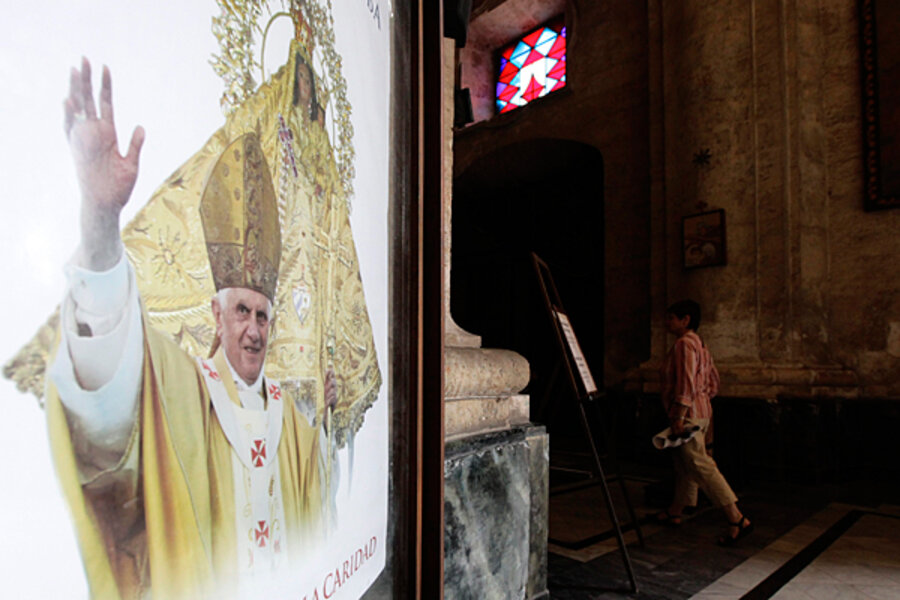Pope Benedict XVI’s trip marks only the second papal visit to Cuba. After the Cuban Revolution, Fidel Castro dubbed the island an atheist state, exiling priests and sending many to reeducation camps. But the situation began to shift after the Soviet Union fell, and Cuba lost a vital financial lifeline.
As a result – and in an effort to reach out for new sources of foreign investment– Mr. Castro made a landmark gesture toward the Vatican, allowing Pope John Paul II to visit the island in 1998. (To learn more about the Catholic church in Cuba, see this Monitor story.)
Just over half of Cubans identify as Catholic, which places it among the lowest Catholic populations in the region, according the the Pew Forum on Religion and Public Life.

Desmond Boylan/Reuters
A woman walks at the entrance of Havana's Cathedral beside a poster of Pope Benedict XVI on Thursday.




